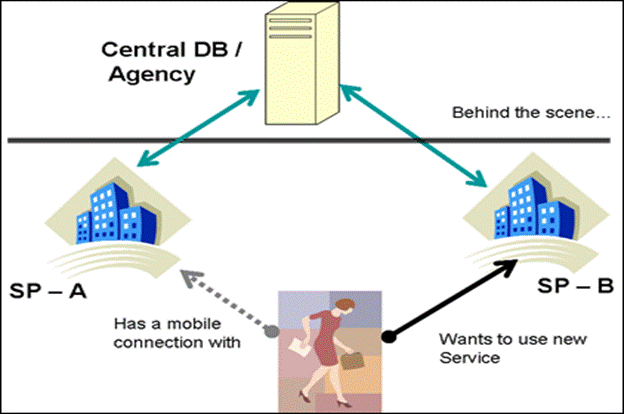





Published on Feb 14, 2025
Mobile Number Portability (MNP) requires that mobile telephone customers can keep their telephone number-including the prefix-when switching from one provider of mobile telecommunications services to another.
In the absence of MNP, customers have to give up their number and must adopt a new one when they switch operators. As a result, customers face switching costs associated with informing people about changing their number, printing new business cards, missing valuable calls from people that do not have the new number, etc. Based on these considerations, many regulatory authorities have imposed mandatory MNP-or are about to require its introduction-so as to reduce customers' switching costs, attempting to make mobile telecommunications more competitive.
Number Portability will allow subscribers to change their service provider while retaining their old mobile number. Portability benefits subscribers and increases the level of competition between service providers, rewarding service providers with the best customer service, network coverage, and service quality.
Number portability is a circuit-switch telecommunications network feature that enables end users to retain their telephone numbers when changing service providers, service types, and/or locations. When fully implemented nation wide by wireline and wireless providers, portability will remove one of the most significant deterrents to changing service, providing unprecedented convenience for consumers, and encouraging unrestrained competition in the telecommunications industry.
All Cell phones have special codes. These codes identify the phone, the phone's owner, & the service provider. Cell phones use high frequency radio signals to communicate with cell towers located throughout the calling area. These phones operate in the frequency range of 806-890 MHz.
• India is the 8th nation in Asia to launch MNP.
• Around 60 countries have already adopted MNP
SP-B goes to the central agency. Either with one request or with bulk of them. Queries for the details. This process is known as " Dipping ". The customer can be charged for this. The dipping charge may not be more than Rs 19 per request per customer. This is because the service providers need to setup infrastructure, and incur some expenses for portability. The central agency checks with the SP-A. This could include verifying whether the customer has paid all dues any completed pending commitments. The SP-A can also choose to check with customer to verify the authenticity of the request. However SP-A upon getting the instructions from Central agency need to finish the portability in one hour.
In case, the customer wants to cancel the request, she can do it within 24 hours from applying. In that case, she can't reclaim the dipping charge. Once into the new SP-B, the customer cann't move out and retain the number at the same time for the next three months. The entire process may take more than 2 days to a maximum of 4 days

It is widely recognized that the current method of allocating NPA-NXXs in blocks of 10,000 is inefficient and contributing to shortages of numbering resources. In an effort to find a more efficient method of allocation, FCC had approved a National Number Pooling plan for network resource optimization. Number pooling is defined as the ability to share an NPA-NXX among several facilities-based carriers within the same rate center.
The concept of pooling is based on the fact that whole blocks of telephone numbers, held by some service providers, are not assigned or in service. Pooling allows these currently unassigned blocks of numbers to be reassigned to other service providers in need of numbers, as they request and show need. With pooling, service providers can maintain a small supply of numbers for expected subscriber assignment. As that supply depletes, service providers will request additional numbering resources from the industry inventory maintained by the Pooling Administrator.
When a "pooled" block of numbers is transferred from one service provider to another, there is some critical information that needs to be broadcast across the region to ensure effective data provisioning for call routing. To facilitate the broadcasting of "pooled" blocks and associated routing data, the Location Routing Method, the same platform used for LNP could be used for implementation of national number pooling. This method of resource allocation allows NXXs within a given NPA to be shared among entities that offer service to subscribers within a defined geographic area (rate center). Specifically, it allows the assignment of numbers to competitive service providers in blocks of 1000.
| Are you interested in this topic.Then mail to us immediately to get the full report.
email :- contactv2@gmail.com |